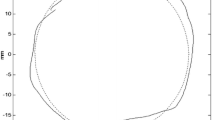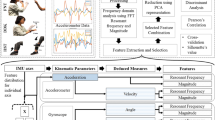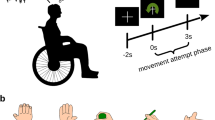Abstract.
We investigated high curvature analysis (HCA) and integrated absolute jerk (IAJ) for differentiating healthy and cerebellopathy (CB) patients performing pointing tasks. Seventeen CB patients and seventeen healthy controls were required to move a pointer at their preferred pace between two 50.8 cm laterally spaced targets while standing with their arm extended in front of their body. HCA was used to quantify the frequency of sharp turns in the horizontal-plane (anterior-posterior and medio-lateral) velocity trajectory of the hand-held pointer. IAJ was assessed by integration of absolute jerk (second time derivative of velocity) time histories in the anterior-posterior and medio-lateral directions. HCA scores and IAJ scores were then compared between CB patients and healthy controls; for both analyses, higher scores indicate less smooth movements. We hypothesized that CB patients would have less smooth movement trajectories than healthy controls due to upper extremity ataxia associated with cerebellar disease and degeneration. We found that CB patients had higher HCA scores than healthy controls (P = 0.014). Although CB patients had higher IAJ scores in both anterior-posterior (P = 0.060) and medio-lateral (P = 0.231) directions compared to the healthy controls, the differences were not significant. The difference in sensitivity between the HCA and the IAJ analysis might be explained by primitive neural activation commands, ubiquitous though only evident with some cerebellar dysfunctions, which produce sub-movements which are themselves minimal jerk curves. We conclude that HCA may be a useful tool for quantifying upper extremity ataxia in CB patients performing a repeated pointing task.
Similar content being viewed by others
Author information
Authors and Affiliations
Additional information
Received: 17 December 1999 / Accepted in revised form: 7 July 2000
Rights and permissions
About this article
Cite this article
Goldvasser, D., McGibbon, C. & Krebs, D. High curvature and jerk analyses of arm ataxia. Biol Cybern 84, 85–90 (2001). https://doi.org/10.1007/s004220000201
Issue Date:
DOI: https://doi.org/10.1007/s004220000201




